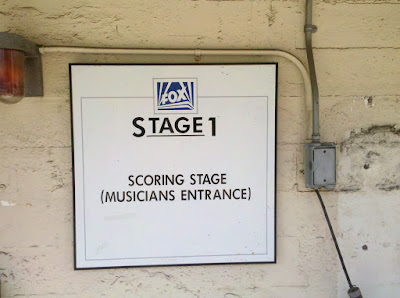I’m a big baseball fan. The title of this post (for the un-baseball fans out there) refers to the situation where a pitcher – known as the ‘closer’ – is brought into the game with his team leading in the 9th inning to get the final three outs – sometimes only one or two outs. If he is successful in maintaining the lead and winning the game for his team, he is credited with a “save”.
I received a question in the comments from Phillip yesterday:
“My question for you is regarding Season 1 Episode 9 ‘Life in the Fast Lane’. What song is played during the scene where Homer carries Marge out of the Nuclear Power Plant? It sounds like “Up Where We Belong” however it is a different version. I’ve been looking around the internet for quite some time now with no luck in finding it. Thanks so much for your help!”
I thought I covered this in a previous post, so I spent some time word-searching the blog for the answer to point Phillip to that post. Alas, my memory is playing tricks on me as I cannot find any such post. If, by some weird chance, I did already tell this story, forgive the rerun (or “encore performance” as they like to call it now).
At the end of the music spotting session for 7G11 “Life On The Fast Lane”…
SIDEBAR: OOH! WAIT! Fun story about the title. It was originally titled “Bjorn To Be Wild” because the man that Marge almost had her affair with was first written as a Swedish tennis instructor. Then it got changed – don’t know if it was the writers or Albert Brooks – to the French bowling instructor Jacques. For a while the title became “Jacques To Be Wild”
which was kind of fun and quirky, but didn’t make much sense. Eventually the episode was renamed “Life On The Fast Lane” which has a punny bowling reference in it.
…where was I? At the end of the music spotting session for 7G11 “Life On The Fast Lane” we came to that final scene that parodies “An Officer And A Gentleman” and the music that you hear was temped into the cut we were watching. I piped up and asked, “Did you clear that music? Is that what we are going to use in the show?” And I was told, “Yes, we are. We cleared ‘Up Where We Belong.'” I immediately had the same reaction Phillip had. The cue is an instrumental that has some of the melody line from “Up Where We Belong”, but it was not the song version that was a big hit at the time the movie was released. I pointed this out to the producers and they said they’d look into it.
A few days later I received a “thank you” call from the producers telling me that I was right and that they had cleared the wrong cue. The name of the instrumental is “Up Where We Belong (Zack Gets Paula)”
I was credited with my first “save” as music editor on THE SIMPSONS. I’ve had a few more since then, but the timing of that one was pretty significant because the show was still new, I was still new to the producing team, and I had showed them that my head was in the game and an asset to the production.
That’s it. A cool anecdote from nearly 26 years ago that I still remember clearly. Where are my car keys?




 I just received a question via twitter from user @cook879 asking, “What does the (Lib.) mean” in the music spotting notes? Rather than reply privately, I thought I would answer with a brief blog post.
I just received a question via twitter from user @cook879 asking, “What does the (Lib.) mean” in the music spotting notes? Rather than reply privately, I thought I would answer with a brief blog post. Well, we’ve finally reached the last of my seven steps of music editing: Music Clearance, or preparing the Music Cue Sheet.
Well, we’ve finally reached the last of my seven steps of music editing: Music Clearance, or preparing the Music Cue Sheet. We’ve reached step 5 of 7 in the music editing process and it’s one of the most fun and anticipated steps: The Scoring Session.
We’ve reached step 5 of 7 in the music editing process and it’s one of the most fun and anticipated steps: The Scoring Session.